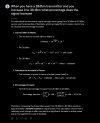I think the OP needs to look up what signal-to-noise ratio means and how RF works. S/N is what determines how well the receivers in BOTH the drone and the controller can decode transmissions. For a given signal strength, the background noise determines the signal-to-noise ratio and therefore the reliability of contact. The noise in an urban location at microwave (i.e., WiFi) frequencies is generally far greater than it is out in a quiet environment with flat open terrain where DJI almost certainly did their tests. Not to mention that signal reflections from buildings can cause lots of interference problems irrespective of the noise.
Amplifiers can boost the signal from the controller but generally not from the drone. Proper directional antennas on the controller work for BOTH sides of the transmission, both by boosting gain and also by discriminating against noise coming from a direction other than where it is pointed. They do, however, require making sure that the antenna is always pointed at the drone ... otherwise they will work worse than the stock antennas because they will discriminate against the signal coming from the drone.
Amplifiers can boost the signal from the controller but generally not from the drone. Proper directional antennas on the controller work for BOTH sides of the transmission, both by boosting gain and also by discriminating against noise coming from a direction other than where it is pointed. They do, however, require making sure that the antenna is always pointed at the drone ... otherwise they will work worse than the stock antennas because they will discriminate against the signal coming from the drone.











